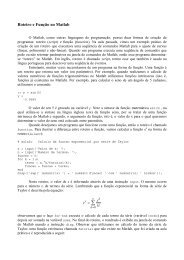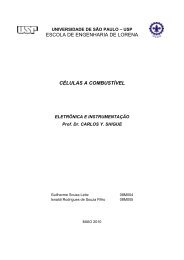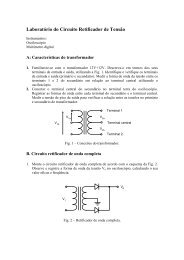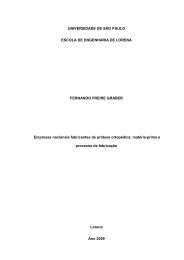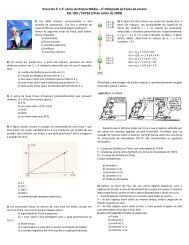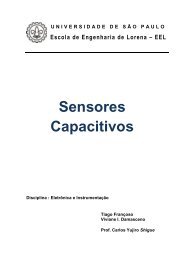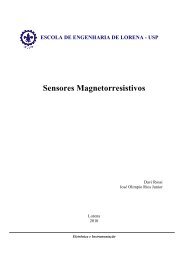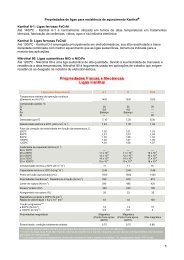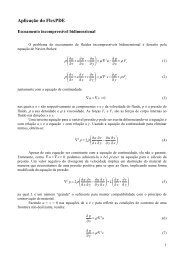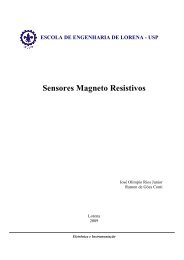SIOV Metal Oxide Varistors - DEMAR
SIOV Metal Oxide Varistors - DEMAR
SIOV Metal Oxide Varistors - DEMAR
Create successful ePaper yourself
Turn your PDF publications into a flip-book with our unique Google optimized e-Paper software.
Selection Procedure<br />
FRAME4/home/SMC-Archiv-DB/GG-KB-engl/DB-<strong>SIOV</strong>_97_BNR-B462-P6214-X-X-7600/Auswahl<br />
Note:<br />
If the protection level obtained from the V/I curve is lower than required, one can change to a varistor<br />
with a higher protection level, i. e. higher end number in its type designation. This has a favorable<br />
effect on load handling capability and operating life. The leakage current is further reduced.<br />
If necessary, the number of different types used can be reduced.<br />
2.5.6 Selection by test circuit<br />
The maximum permissible ratings of varistors refer to the amount of energy that will cause the varistor<br />
voltage to change by maximally ± 10 %.<br />
Figures 20 and 21 show typical curves for the change in varistor voltage of metal oxide varistors<br />
when energy is repeatedly applied through a bipolar or unipolar load. You often find an increase of<br />
a few percent to begin with, and for a unipolar load there are also polarization effects. This is seen<br />
in figure 22 for the leakage current. Such phenomena have to be considered when interpreting<br />
measured results.<br />
So, in test circuits, one starts with determining the varistor voltage for every single type as accurately<br />
as possible (at a defined temperature). It is advisable to check the change in varistor voltage from<br />
time to time, making sure that the temperature is the same. By extrapolation of the measured results<br />
to the intersection with the –10 % line a guide value for the lifetime of varistors is obtained.<br />
Figure 46, for example, can be taken to be measured results that follow curve 1 of figure 20. The<br />
mean tends towards the horizontal, corresponding to point 1 in figure 20. Although 100 loads of<br />
500 A (8/20 µs) are the maximum permissible number of load repetitions for S14K150 according to<br />
the derating curves, the measured results indicate that a substantially higher number of loads can<br />
be handled in individual cases. Figure 46 gives proof of the high reliability of <strong>SIOV</strong> varistors.<br />
LE End of lifetime by definition<br />
Number of loads<br />
Figure 20 Typical curves for change in varistor voltage when metal<br />
oxide varistors are repeatedly loaded<br />
Siemens Matsushita Components 49


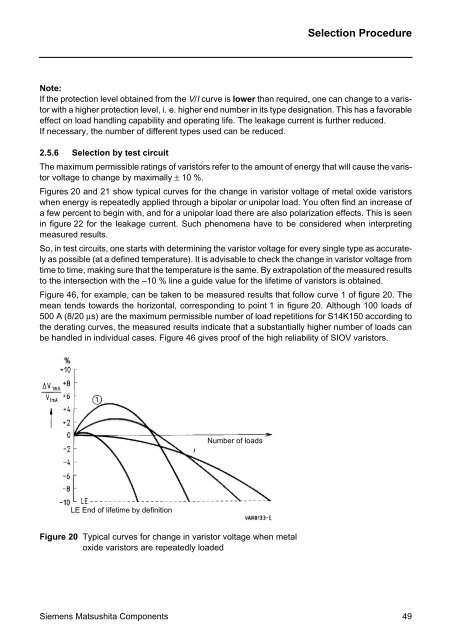
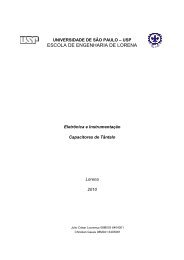
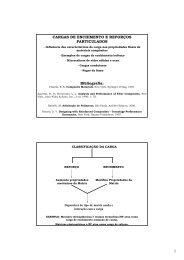
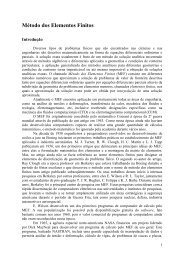
![Equações Diferenciais Ordinárias Lineares de 2ª Ordem [ ] [ ] - DEMAR](https://img.yumpu.com/43234810/1/184x260/equaaaues-diferenciais-ordinarias-lineares-de-2a-ordem-demar.jpg?quality=85)
